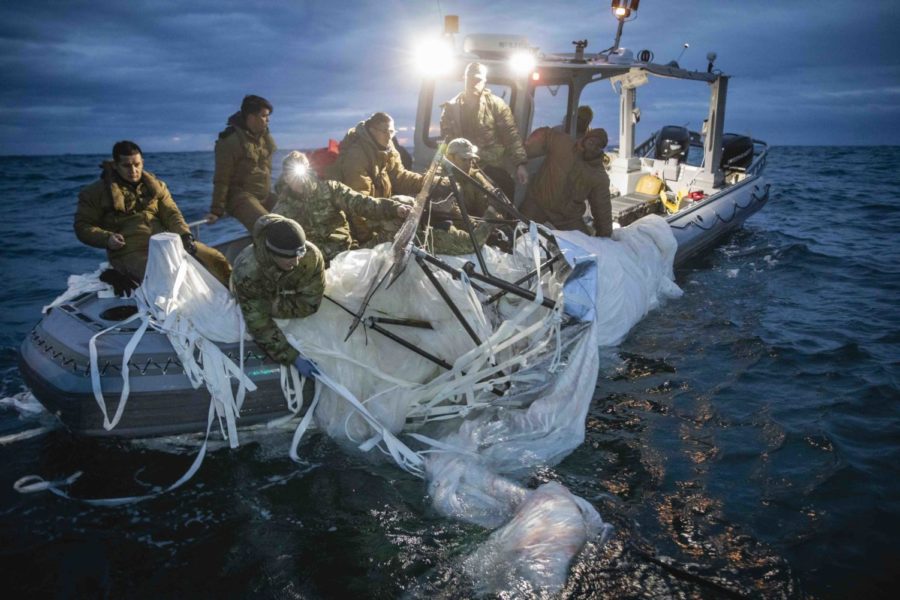US-China tensions inflate over spy balloon
Wikimedia Commons- U.S. Navy Photo by Mass Communication Specialist 1st Class Tyler Thompson
The US Navy & Coast Guard recovered wreckage from the balloon off the coast of South Carolina.
March 22, 2023
On Feb. 4, the United States shot down a Chinese surveillance balloon over the coast of South Carolina after it flew across the country for one week, capturing the attention of Americans from coast to coast.
The balloon first entered U.S. airspace above the Aleutian Islands on Jan. 28, then briefly passing over Canada’s British Columbia, before entering the continental U.S., flying through Montana, Wyoming, South Dakota, Nebraska, Tennessee, and South Carolina, where it was later shot down by an F-22 fighter jet off the coast of Surfside Beach.
The incident has worsened already strained US-China relations, fueling the animosity in the continuing global race between Washington and Beijing.
“The relations are weird because we depend heavily on China for importing goods, and the balloon became something we could grasp onto, being the lowest common denominator to express that there is tension with China,” said Social Science instructor Jeff Isola ’98.
The United States accused China of using this balloon to spy on U.S. territory, hoping to obtain highly classified information, especially intercontinental ballistic missile sites in Montana. China, however, has staunchly defended their claim that it was a research meteorology balloon that was drifted off course by prevailing winds.
After the balloon was shot down, the Navy and Coast Guard began the task of recovering the wreckage, which was later turned over to the FBI for further analysis in Virginia.
The decision by President Joe Biden to wait until the balloon was over water before shooting it down garnered criticism from lawmakers, especially Republicans, citing the balloon’s possible capabilities to collect sensitive information as it crossed the country.
However, Biden administration officials cited that it was safest to shoot the balloon over water to not risk civilian injuries and that they had already taken counter defense measures while the balloon was in the air, from blurring military installations from the balloon’s surveillance equipment to physically moving objects out of the balloon’s flight path.
In April, it was learned that per new reporting, the spy balloon was maneuvered from China, moving in a figure eight pattern, and sending intelligence to China back in real time from US military sites. At this, China continued rejected claims of spying capabilities on the balloon.
“The United States should, of course, take any and all measures necessary to secure its territory and its substantial assets; however, the United States should also stop demonizing the People Republic of China; by working with the PRC, the United States can make more rapid progress towards addressing humanity’s most pressing issue: environmental degradation,” said Social Science instructor Bob Harrington.
Andreas Flores Fok ’24 added that the US shooting the balloon was “excessive force” due to the uncertainty of the balloon’s full capabilities.
In the following days, the United States and Canada detected more unidentified objects in its airspace and proceeded to shoot them down, with countries in Latin America detecting similar objects as well.
These recent events–as well as others like China’s influence over TikTok and their growing closeness with Russia–have further soured US-China relations, and amplify concerns about a future confrontation between both superpowers over Taiwan.

